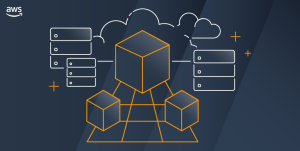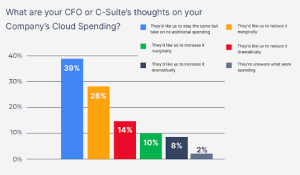
Azure Blob Storage is a highly-scalable, cost-effective, and secure cloud storage service offered by Microsoft. It’s designed to store and manage large amounts of unstructured data, including text, images, videos, and binary data. This cloud storage solution is ideal for organizations that require a flexible and efficient way to store, access, and process their data, supporting cloud automation strategies.
Azure Blob Storage offers three different types of blobs:
- Block Blobs are ideal for storing large files, such as documents, images, and videos. They can be split into smaller blocks, which can be uploaded or downloaded individually, making it easy to work with large files efficiently.
- Page Blobs are designed for random read-write access, making them perfect for virtual hard disks (VHDs) and other applications that require high-performance storage.
- Append Blobs are specifically designed for applications that require append-only operations, such as logging and data streaming.
What Affects Azure Blob Storage Pricing?
Azure Blob Storage pricing is based on several factors, including the type of storage, the amount of data stored, the number of transactions performed, and the data redundancy options chosen. Let’s take a closer look at these factors:
- Storage type: As mentioned earlier, Azure Blob Storage offers three different types of blobs: Block Blobs, Page Blobs, and Append Blobs. The pricing for each type of blob varies based on the specific storage needs of an organization. For example, Block Blobs are priced based on the amount of data stored per month, while Page Blobs are priced based on the number of transactions performed and the amount of data stored.
- Amount of data stored: The amount of data stored in Azure Blob Storage is a significant factor in determining pricing. The pricing model for data storage is based on the amount of data stored per month. The more data stored, the higher the cost.
- Number of transactions performed: Transactions refer to actions performed on the data in Azure Blob Storage. These actions can include uploading, downloading, copying, deleting, and listing blobs. Azure Blob Storage pricing is based on the number of transactions performed per month. The more transactions performed, the higher the cost.
- Data redundancy options: Azure Blob Storage offers different options for data redundancy, such as locally redundant storage (LRS), geo-redundant storage (GRS), and read-access geo-redundant storage (RA-GRS). These options provide varying levels of redundancy and availability in Azure. The cost of each option varies, with GRS and RA-GRS being more expensive than LRS.
See this blog post for a more in-depth look at Azure blob storage pricing options.
Azure Blob Storage Pricing Examples
Here are some pricing examples, for Central US region:
Data storage prices pay-as-you-go
| Data storage prices pay-as-you-go | Premium | Hot | Cool | Cold (preview) | Archive |
| First 50 terabyte (TB) / month | $0.18 per GB | $0.018 per GB | $0.01 per GB | $0.00443 per GB | $0.002 per GB |
| Next 450 TB / month | $0.18 per GB | $0.0173 per GB | $0.01 per GB | $0.00443 per GB | $0.002 per GB |
| Over 500 TB / month | $0.18 per GB | $0.0166 per GB | $0.01 per GB | $0.00443 per GB | $0.002 per GB |
Operations and data transfer costs
| Operations and data transfer | Premium | Hot | Cool | Archive |
| Write operations (per 10,000) | $0.0273 | $0.065 | $0.13 | $0.13 |
| Read operations (per 10,000) | $0.0022 | $0.005 | $0.013 | $6.50 |
| Data Retrieval (per GB) | Free | Free | $0.01 | $0.02 |
| Data Write (per GB) | Free | Free | Free | Free |
| Index (GB/month) | N/A | $0.026 | N/A | N/A |
Blob Index
Blob Index is an intelligent data sub-resource for blob; consisting of user-defined key/value tag attributes that are automatically indexed for querying. This provides a managed multi-dimensional classification for your blob objects, allowing for quick, simple, and cost-effective data discovery capabilities beyond listing by prefix filters on blob name.
| Blob Index | Hot | Cool | Archive |
| Blob Index (per 10K tags) | $0.037 | $0.037 | $0.037 |
Blob inventory
Blob inventory provides a list of the containers, blobs, blob versions, and snapshots in your storage account, along with their associated properties. It generates an output report in either CSV or Apache Parquet format on a daily or weekly basis. You can use the report to audit retention, legal hold or encryption status, or you can use it as a scheduled alternative to the List Blobs API for your workflows.
| Feature | Premium | Hot | Cool | Archive |
| Blob inventory | $0.003 | $0.004 | $0.004 | $0.004 |
Azure Blob Storage Cost Optimization Techniques
While Azure Blob Storage provides a cost-effective solution for cloud storage, there are several ways organizations can optimize their costs:
- Use block blobs for large files: If your organization deals with large files, consider using Block Blobs for storage. Block Blobs can be split into smaller blocks, making it easier to work with large files efficiently. This reduces the number of transactions required, lowering costs.
- Leverage tiered storage: Azure Blob Storage offers tiered storage options, such as hot, cool, and archive tiers. Organizations can move data to a lower-cost tier when it’s no longer frequently accessed. This can significantly reduce storage costs while maintaining data accessibility.
- Use data compression: Compressing data before storing it in Azure Blob Storage can significantly reduce storage costs. Compressed data requires less storage space, resulting in fewer transactions and lower costs.
- Delete unnecessary data: Regularly deleting unnecessary data can help reduce storage costs. This includes deleting old or outdated data, duplicate data, and data that is no longer needed.
- Choose the right data redundancy option: Choosing the right data redundancy option is critical for cost optimization. LRS is the most cost-effective option, while GRS and RA-GRS offer higher redundancy and availability at a higher cost. Organizations must select the option that best suits their needs.
By implementing these cost optimization techniques, organizations can significantly reduce their Azure Blob Storage costs while maintaining data accessibility and security.
Conclusion
Azure Blob Storage is a powerful cloud storage solution that offers scalability, flexibility, and security. However, organizations must consider the factors that affect pricing to estimate their costs accurately. By leveraging cost optimization techniques, organizations can reduce their Azure Blob Storage costs significantly.
Overall, advanced endpoint protection is critical for organizations looking to secure their data and infrastructure from cyber threats. Azure Blob Storage is an excellent solution for storing and managing large amounts of unstructured data in the cloud. By understanding Azure Blob Storage pricing and implementing cost optimization techniques, organizations can enjoy the benefits of advanced endpoint protection while keeping costs under control.
By Gilad David Maayan


